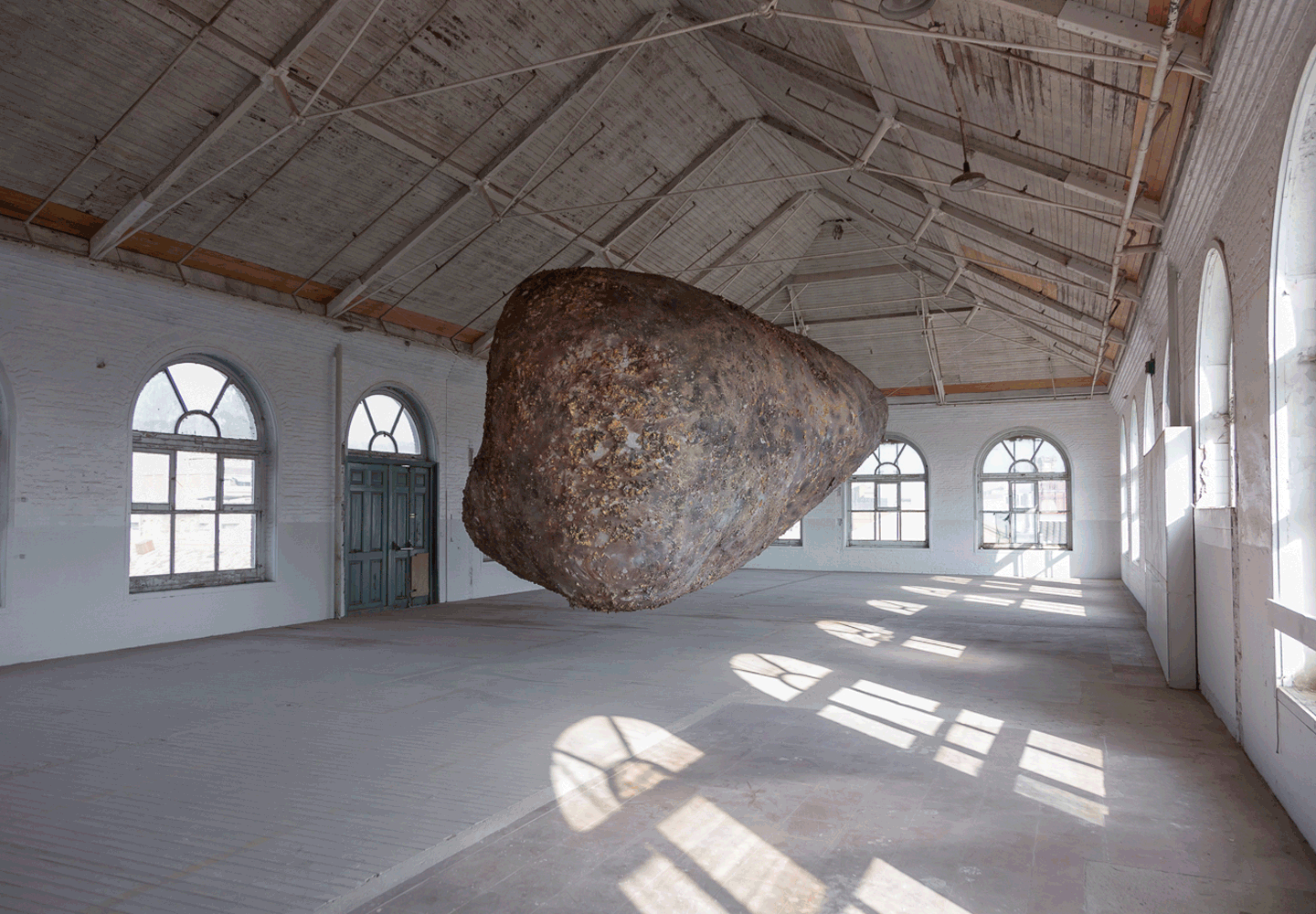It Happens Every Day
February 15–July 26, 2020
The Infinite Library
February 15–May 24, 2020
Fabra i Coats: Contemporary Art Centre of Barcelona and Art Factory is an outstanding municipal facility of 6500 square meters which promotes contemporary visual arts, researches new interdisciplinary languages and develops policies for mediation with the territory and its citizens.
Fabra i Coats links two spaces that, together, encompass the many components involved in the creative process (research, creation, production, exhibition and dissemination). Its location in a plural ecosystem, such as an industrial complex from the XIXth century with a rich cultural and social fabric, opens up its innovation potential.
The exhibition proposal of the new Contemporary Art Centre of Barcelona is approached as a critical exercise in its historical, political and social context. It highlights the critical appropriation of the past and contemporary narratives, from a material and symbolic, individual and collective perspective.
Curated by Joana Hurtado Matheu, It Happens Every Day is a solo exhibition of the artist Jordi Mitjà (Figueres, 1970), who revives and manipulates the most diverse techniques, objects, images and sounds. From a chance finding to working with iron, from the world of books to research on materials, from local stories to disused customs, Mitjà works by engaging with the area where he lives and where he grew up. He says that he made his early creations using remains that he found in his father’s metal workshop, but his father, believing they were scrap, threw them away and since then he has never distinguished between art and rubbish, between what he gathers and what he makes. His work is therefore born of an ambivalent process between territory and decontextualisation, invention and copying, accumulation and rejection, which trigger his practice and a reflection on the creative act that blurs the concepts of authorship and anonymity, construction and destruction, relic and remnant.
For this exhibition, Mitjà has reviewed his career from an updated viewpoint, in other words, he has selected previous pieces based on which he has created new ones. A specific project, that isn’t exactly unpublished, but a version of versions that are mirrored in time and space, using the two floors of Fabra i Coats to create a reflection, but adding a butterfly effect to the specular impression. In line with his work, this review could not be a simple recap, nor evocative or exhaustive. Here the boundaries between past and present are blurred in a non-retrospective reading that remains open.
The Infinite Library is an ongoing collaboration between Haris Epaminonda (Nicosia, 1980) and Daniel Gustav Cramer (Neuss, 1975). It is an expanding archive of books founded in 2007 and made through the recombination of pages from one or more publications found, dating from 1890 up to the 1980s. Each book is dismantled, modified and restructured into new 100 unique volumes, which question the innumerable possibilities of appropriating such material by recycling, overlapping, juxtaposing, merging or altering them. The artists have designed 18 vitrines, inside which books will be on view on the 2nd floor; on the 3rd floor, they are launching a new durational work that will take place every day and where visitors are invited to take part.
Here, like in a library, the acts of looking and reading are on display, as actions rooted in imagination and reflection. In this sense, the individual and shared experience that takes place on the second floor gives rise, on the third, to a new expository condition, which generates a new book. The collection as a fetishistic ensemble encounters its immaterial, imaginary or critical nature. Seeing how this inventory of books participates in the present gives us a vision of art as everything it is and can be. This is its boundlessness, represented in the perpetual action that records a secret collection of names, the multiple and unknown testimony of the literary community—that “unavowable community” referred to by Maurice Blanchot. And this is also the visitors’ commitment and emancipation; they must redefine their role in this open conversation.



